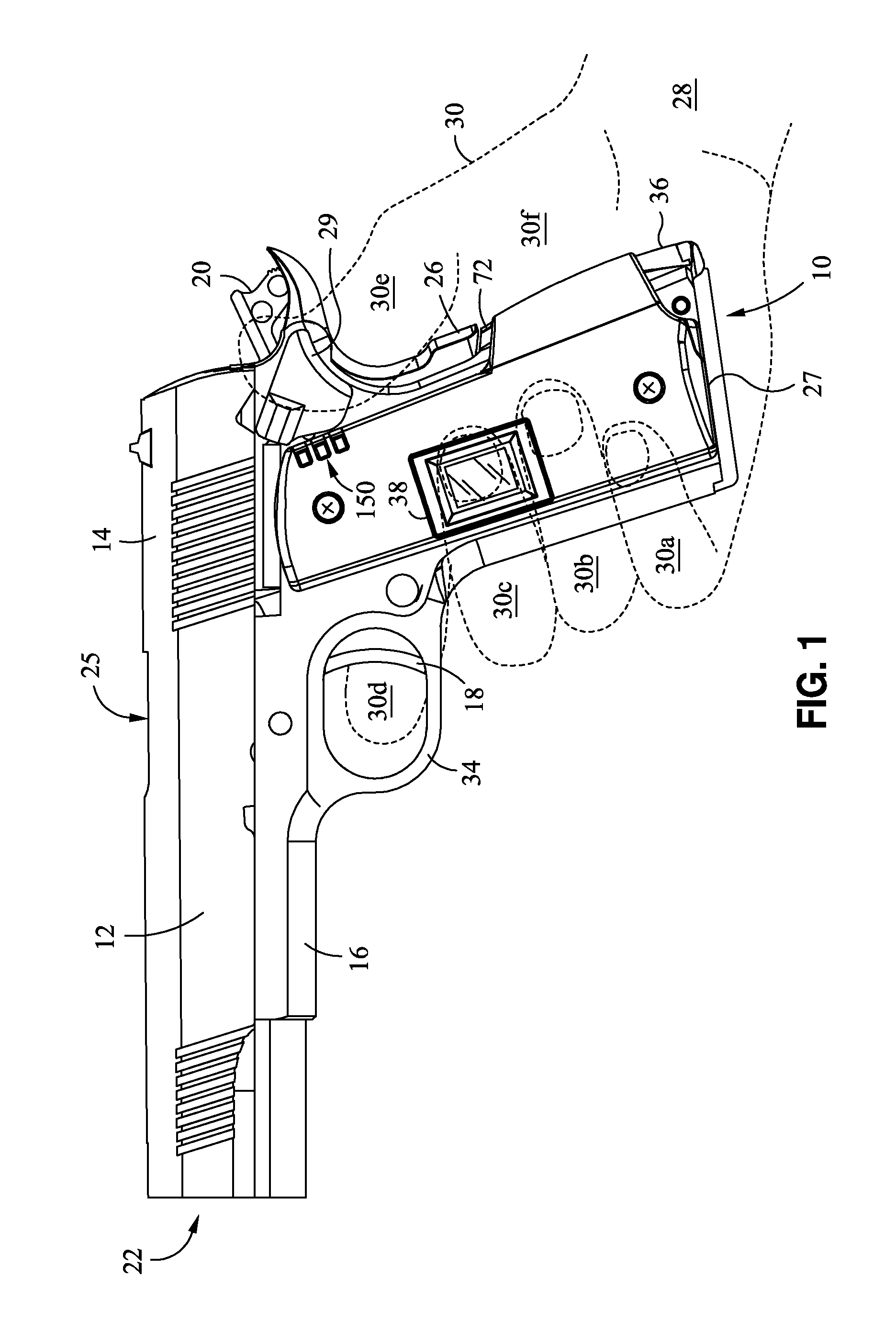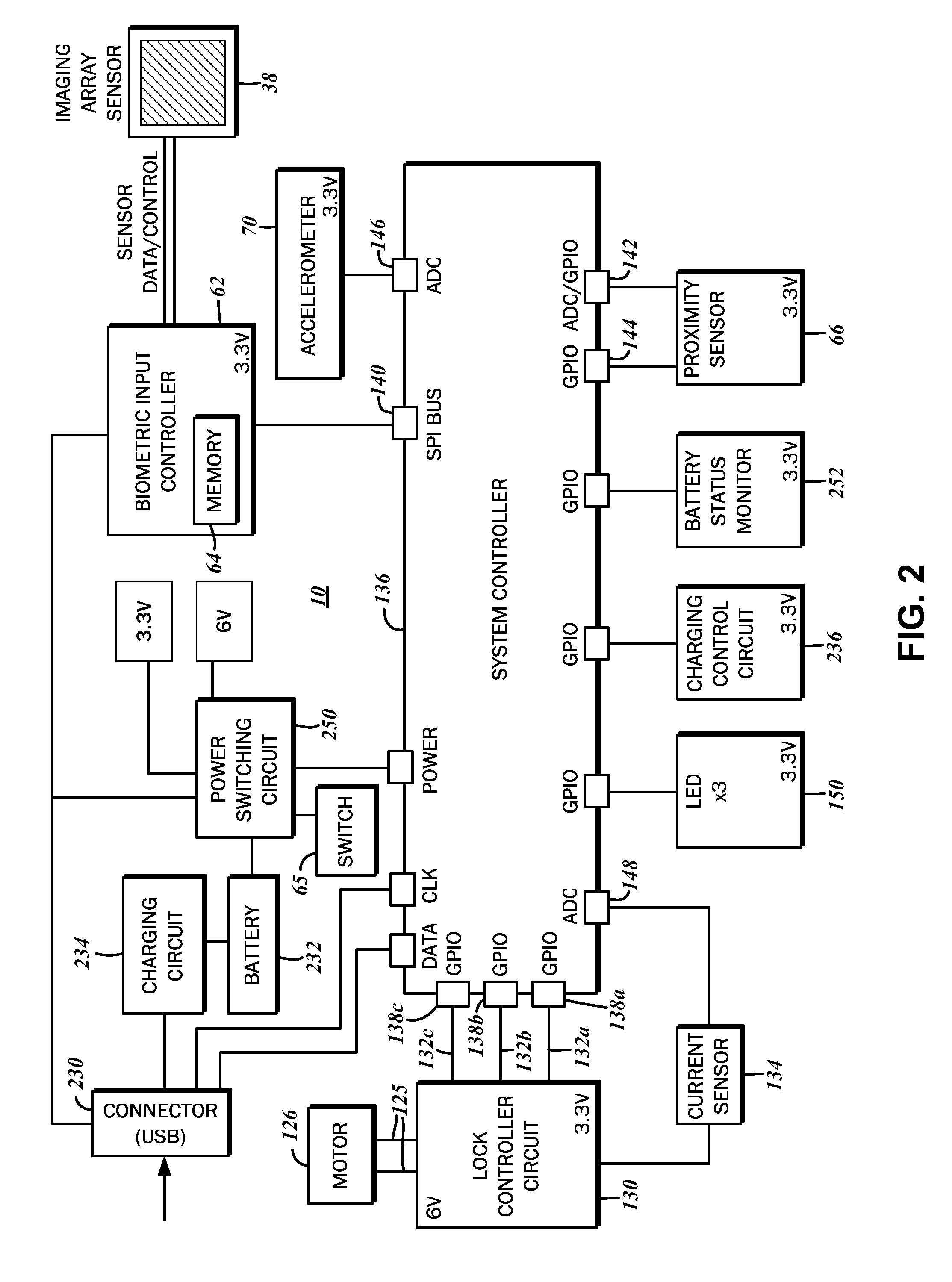Firearm locking system
a locking system and firearm technology, applied in the field of firearms and biometric systems, can solve the problems of affecting the safety of handguns sold in some jurisdictions, the harm resulting from inappropriate use of firearms is compounded or exacerbated, and the manufacturer is prohibited from selling handguns in some jurisdictions withou
- Summary
- Abstract
- Description
- Claims
- Application Information
AI Technical Summary
Benefits of technology
Problems solved by technology
Method used
Image
Examples
first embodiment
[0066]Referring to FIG. 5 and FIG. 6A, the mainspring housing 88a further defines a second bore 118. The lock 72 includes a locking pin 120 that is retractable into and extendible out of the second bore 118. In the extended position, the locking pin 120 blocks the rotation of the grip safety 26. On the other hand, in the retracted position, no obstruction is presented against the grip safety 26, allowing free movement thereof.
[0067]Within the second bore 118, there is disposed an actuator 122 that retracts and extends the locking pin 120. Any type of actuator may be utilized, though in one embodiment, it is electromechanical. In this regard, the actuator 122 may be comprised of a servo motor 126 with a planetary gear that translates rotational motion to linear motion. It will be recognized by those having ordinary skill in the art, however, that the actuator 122 may be a solenoid, a stepper motor, a bimetallic strip, a piezoelectric actuator, or any other suitable electromagnetic de...
second embodiment
[0069]In some cases, there may be a need to externally override the actuator 122, and so the mainspring housing 88b defines an override key slot 128 through which a mechanical override 256 is accessed. According to one implementation, the mechanical override 256 includes a socket 258 that is mechanically linked to the actuator 122. By rotating the socket 258 with a key that is configured to be received therein, the telescoping shaft is retracted, thereby retracting the blocking wedge 254. Although one embodiment of the mechanical override 256 has been shown and discussed, those having ordinary skill in the art will recognize that other configurations are also possible.
[0070]Referring again to the block diagram of FIG. 2, first and second electronic signals that drive the actuator 122 is generated by a lock controller circuit 130. More particularly, the lock controller circuit 130 is a conventional H-bridge circuit, which bi-directionally connects a voltage source to a load, that is,...
PUM
 Login to View More
Login to View More Abstract
Description
Claims
Application Information
 Login to View More
Login to View More - R&D
- Intellectual Property
- Life Sciences
- Materials
- Tech Scout
- Unparalleled Data Quality
- Higher Quality Content
- 60% Fewer Hallucinations
Browse by: Latest US Patents, China's latest patents, Technical Efficacy Thesaurus, Application Domain, Technology Topic, Popular Technical Reports.
© 2025 PatSnap. All rights reserved.Legal|Privacy policy|Modern Slavery Act Transparency Statement|Sitemap|About US| Contact US: help@patsnap.com



